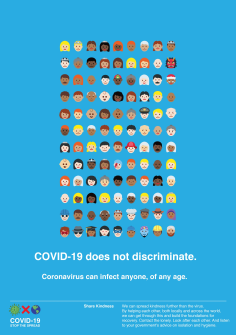 What has been the role of scientists, science communicators and others in transmitting information about the virus and its behaviour? To what extent have they been able to influence people's information level, scientific knowledge and temper, belief systems and perceptions leading to actions? It is important to find out what information has been absorbed and what has been rejected by the public.
What has been the role of scientists, science communicators and others in transmitting information about the virus and its behaviour? To what extent have they been able to influence people's information level, scientific knowledge and temper, belief systems and perceptions leading to actions? It is important to find out what information has been absorbed and what has been rejected by the public.
ANHAD and PM Bhagava Foundation a group of scientists and activists launched a survey-based study to explore these concerns. The study, anchored by Gauhar Raza, Surjit Singh, PVS Kumar and Leena Dabiru, used survey research method to gauge the extent of knowledge regarding the SARS-CoV 2 virus and disease it causes COVID-19 among a section of the Indian population. Covering some 3500 people who filled in a semi-structured questionnaire during May 2020 data was collected both online and offline. While more than half the sample was from north India, it did cover 27 provinces of the country. The sample also reflected mostly an urban, middle class population with over 60 percent being males. In the early period when information was scarce and both science based information and pseudo science and superstitions spread quickly, preliminary analysis of the data shows that a majority rejected superstition and formed opinion based on scientific information that was communicated by experts.
Surprisingly most respondents cited internet as the source of information on COVID-19, while TV was the second most popular source. With regard to the origin of the virus, 42 pe cent believed that it had evolved through natural processes and 30 per cent that it was man-made. Eight of 10 respondents could visually identify the virus and 75 per cent were aware that it spreads through human contact. A large proportion identified metal and plastic surfaces as surfaces on which the virus survives longest. Information on incubation period and symptoms were well-known and most said that public health containment strategies were needed in the absence of vaccines or a cure.
While most are afraid of contracting the disease when they go out, fear of death was small. Most knew of testing methods for the disease. three-fourths of the respondents said the disease had travelled to India from abroad and only a very small proportion said it had been brought into the country by Tablighi Jamaat.
Slightly more than half said that the lockdown had helped and over 88 percent supported the closure of places of worship. Most believed that social distancing would retard COVID-19, nor eradicate it.
While the study is small, it is a systematic one and it would be reasonable to think that these responses would hold for a larger population. This is however a preliminary report and the study itself is still under way.
Posted on :
Jun 13, 2020